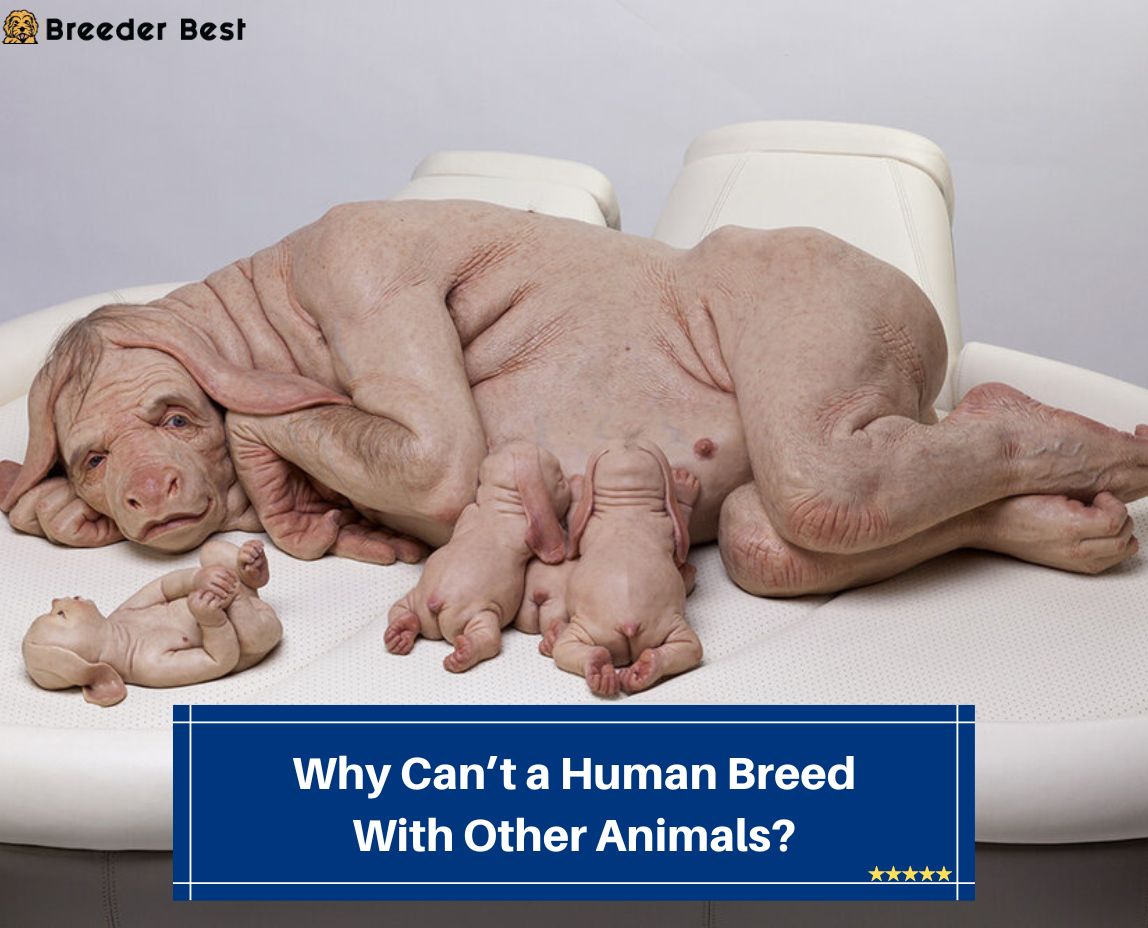Human-animal hybrids have appeared in stories for thousands of years, from the centaurs of Greek mythology to Narasimha, the lion-headed avatar of the Hindu god Vishnu. In the real world, why can’t a human breed with other animals when we know some other species can interbreed? Let’s take a closer look at this.
Other articles you would like: Is Animal Breeding Safe? and How To Make Dogs Breed Successfully!
Crossbreeding In Nature
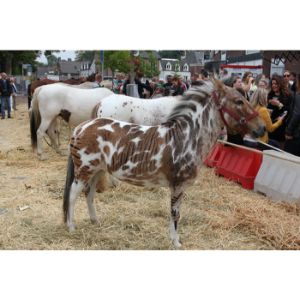
Crossbreeding between different animals in nature is rare, but it does happen between some species that are sufficiently related. This process is known as hybridization.
The most familiar form of this is dog breeds. While each breed has distinct characteristics, often created over hundreds of years of selective breeding, many dogs can still breed with each other and produce viable offspring that share traits.
This process works because all dogs are part of the same species, even if they have unique characteristics. When humans breed animals to their liking, it’s usually to promote traits that humans find valuable in companions.
On the next level, crossbreeds of moderately different species produce viable offspring. This is the case with ligers (lion father, tiger mother) and tigons (tiger father, lion mother), where the males are often sterile, but the females can breed with other cats.
Ligers are rare in nature because their parents tend to live in widely separated areas and don’t meet naturally. If they lived closer together, they might have created naturally viable offspring over time.
Finally, we have crossbreeds that produce offspring, but those offspring are infertile and can’t create more of their kind. Sterile offspring are common whenever a zebra mates with another equine, although sometimes the resulting animal might be able to breed.
It All Comes Down To The Genes

The main factor affecting the possibility of hybridization is the genetic code of parent animals. Why can’t humans and animals breed, you ask? It’s because our genetic codes are too different, so the blueprints don’t work together.
Natural hybrids occur only between closely-related species, so the hybridization process does not result in instructions for a child that cause it to self-destruct.
Genes are essentially instructions for cells on how to operate, and much like computers, cells will usually follow the instructions exactly as given. If those instructions result in self-destruction, you don’t get viable offspring.
What Animals Could Theoretically Crossbreed With Humans?
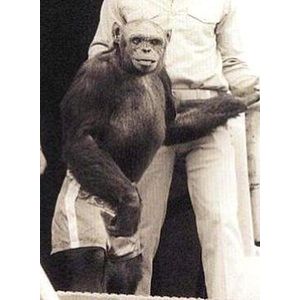
So, can humans breed with any other animals? The primary focus of crossbreeding between humans and animals is the chimpanzee. Chimps share approximately 99% of coding DNA sequences with humans, which is much closer than most other animals.
This theoretical offspring is known as a humanzee. While there are no successful verified versions of humanzees, there has been interest in the topic throughout the 20th century. Ilya Ivanov is thought to have experimented with this in Russia in the 1920s, and reports suggest there was an experiment in China in the 1960s that never produced offspring.
The most recent hybridization attempt occurred in 2019; there were claims that Professor Juan Belmonte created a human-chimp embryo. The development of the embryo was cut short due to ethical concerns, but we can learn from the situation that such chimera hybrids are possible with the use of technology.
Crossbreeding between humans and other monkeys or primates is much less likely. Chimpanzees are unusually close to humans, but other species are too different for any likelihood of success here.
What Breed Of Animals Are Chimpanzees?
Chimps are part of the Great Ape breed of animals, which also includes humans, gorillas, bonobos, and orangutans. These animals should not be confused with Lesser Apes, which are smaller primates that have significant physical and mental differences from their larger relatives.
Do Apes Mate Like Humans?
Apes mate in ways similar to humans, but different social structures are visible in their groups. For example, male chimps prefer older and more experienced female partners, while humans focus more on youthfulness.
What Animals Could Crossbreed With Chimps?
Outside of humans, the most likely animal to interbreed with chimps is the bonobo. Genetic evidence suggests that some groups of chimpanzees have hybridized with bonobos in the past, and the fact that the shared DNA remains indicates that there was fertile offspring. These animals also interbreed occasionally in captivity.
Why Don’t Humans Breed Like Animals?
Why can’t a human breed with other animals, or like them? There are many possible reasons that humans don’t breed like animals, and the truth is probably some combination of them.
One of the primary factors is that humans can breed throughout the year. Animals usually have mating seasons that tie into their food availability, aiming for offspring to be born when they have the most access to food and are more likely to survive. Humans, especially in developed societies, have easier access to food throughout the year.
That said, while humans can be fertile year-round (with a 28-day ovulation period in women), the environment heavily affects preferred mating times. Higher latitudes tend to have more births earlier in the year than lower latitudes, although this is only a trend, and plenty of children are born outside of the peak times.
What If Animals And Humans Could Breed?
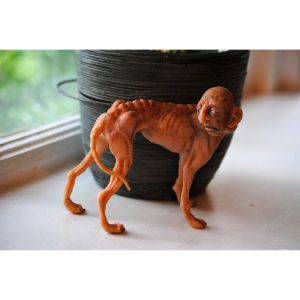
Having humans or animals bear the embryos of different animals is a popular subject in fantasy and science fiction novels. Ethics prevent in-depth research into this topic, but we have some reliable predictions for how it might work out.
Averages Are Likely
A child gets half of its genes from each parent, so on the whole kids trend toward being an average of their parents.
A humanzee would probably be larger and stronger than a regular chimp, but dumber and shorter than a human. Something in-between is much more likely, especially if there’s enough genetic diversity to stabilize the population and weed out whatever gene combinations cause infertility.
The healthiest offspring probably would come from species that are most closely related at the start of the process. An extremely different crossbred animal, like a human plus a crab, would probably die early even if the fetus was born somehow.
It Wouldn’t Be Mermaids Or Centaurs
The classic chimera offspring in popular culture is half human and half something else. Centaurs and mermaids have the lower bodies of horses and fish, respectively, and writers assume that they would have similar skeletal and muscular structures to animals.
Realistic crossbreeds are unlikely to have such a clear-cut separation between human and animal segments. Instead, their bodies and organs are more likely to resemble the average of the base species, with two arms and two legs for anything humans crossbreed with.
They Would Need Help to Survive
The fundamental requirements for human-like life are food, water, and shelter. Most animals go out to find food, but only some of them create shelters. Even those who do make shelters might not keep them for long.
For example, while chimps are closely related to humans, they’re not farmers, and they don’t actively grow food. They might prepare food, especially if shown how to cook, but they don’t understand the concepts of planting and managing a farm.
Similarly, humans are among the least-suitable creatures to survive in the wild. While we have some advantages, including far better stamina over time than most creatures, humans have poor internal temperature control and must wear clothing to live comfortably in many environments.
Theoretical human-animal chimeras would almost certainly require food and shelter prepared by humans to thrive. They would most likely possess a lower intelligence than humans and might not be able to figure out how to survive without help.
Only The Offspring Might Be Viable
For scientists, most animals only become species when they can breed and create others of their kind. This sort of viability is rare in natural chimeras, although it does occur with a few combinations of animals.
Creating a hybrid is usually more challenging than breeding animals of the same species, although scientific techniques can make this process easier. Cloning can help establish a species, but if we want it to thrive on its own, ensuring that most offspring are viable is a necessary step.
Can We Edit Genes Enough To Make Human-Animal Hybrids Possible?
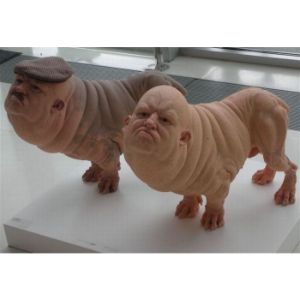
Why can’t a human breed with other animals? We have the technology to make it possible, don’t we?
Yes, actually. Gene-editing techniques exist, allowing us to add, remove, or change existing genetic information. Theoretically, with enough time and testing, we could hybridize a human with almost any other creature to acquire desirable traits while eliminating negative effects.
An entire genre of speculative fiction is based on this theory, with some authors believing that an interstellar version of humanity might try to adjust colonists for distant worlds. Similar ideas crop up in superhero stories and other pop culture entertainment.
One element that’s come out of this is the Harkness Test, a measure for whether or not it would be appropriate for a human to breed with a hybrid or other non-human creature. Put simply, the test asks if a creature is sufficiently intelligent, capable of communicating, and of sexual maturity for its species.
However, while all of this gene editing is theoretically possible and already being pursued in some labs, genes are complicated and it’s unlikely that we will see widespread creation of chimeras soon. But, who knows what technology might be able to accomplish in the future?
You will also like:
- How Old Do Male Dogs Have To Be To Breed?
- Why Do Animal Breeders Need To X-Ray?
- Animal Breeders Registration!
For more information about Human Breeding With Other Animals, check out the video below:

